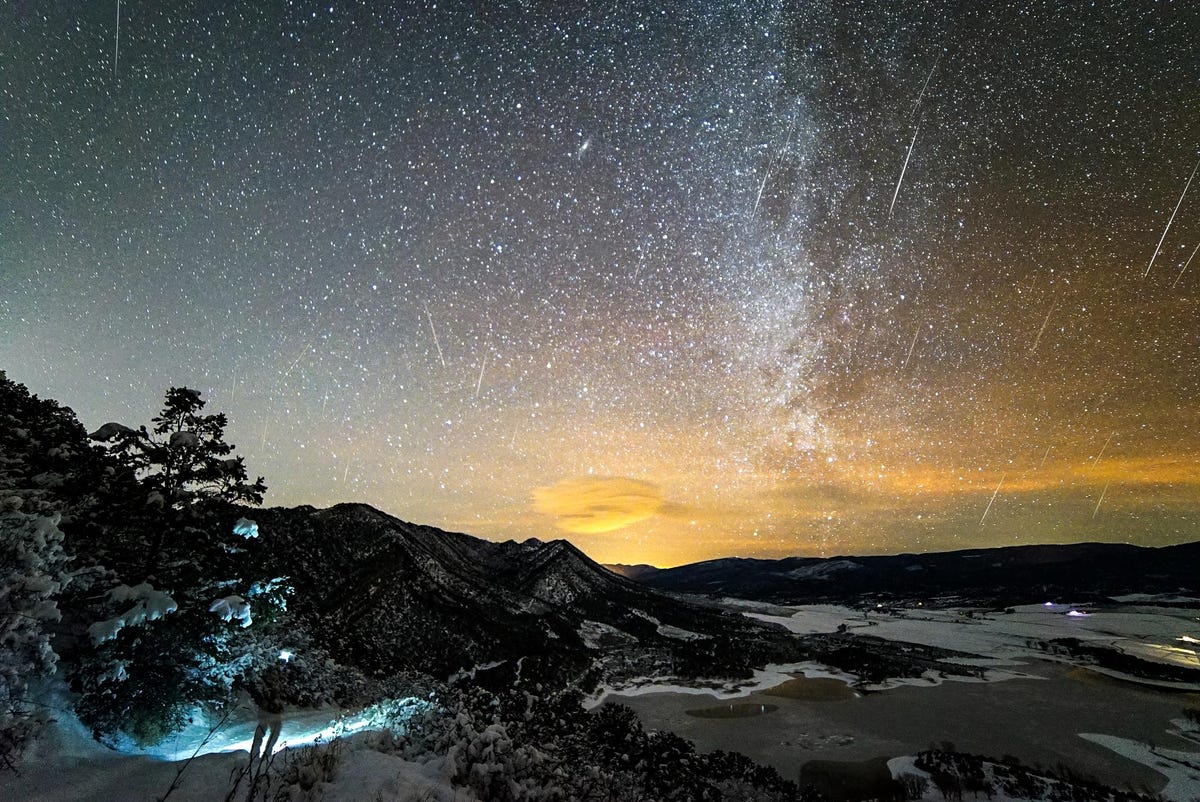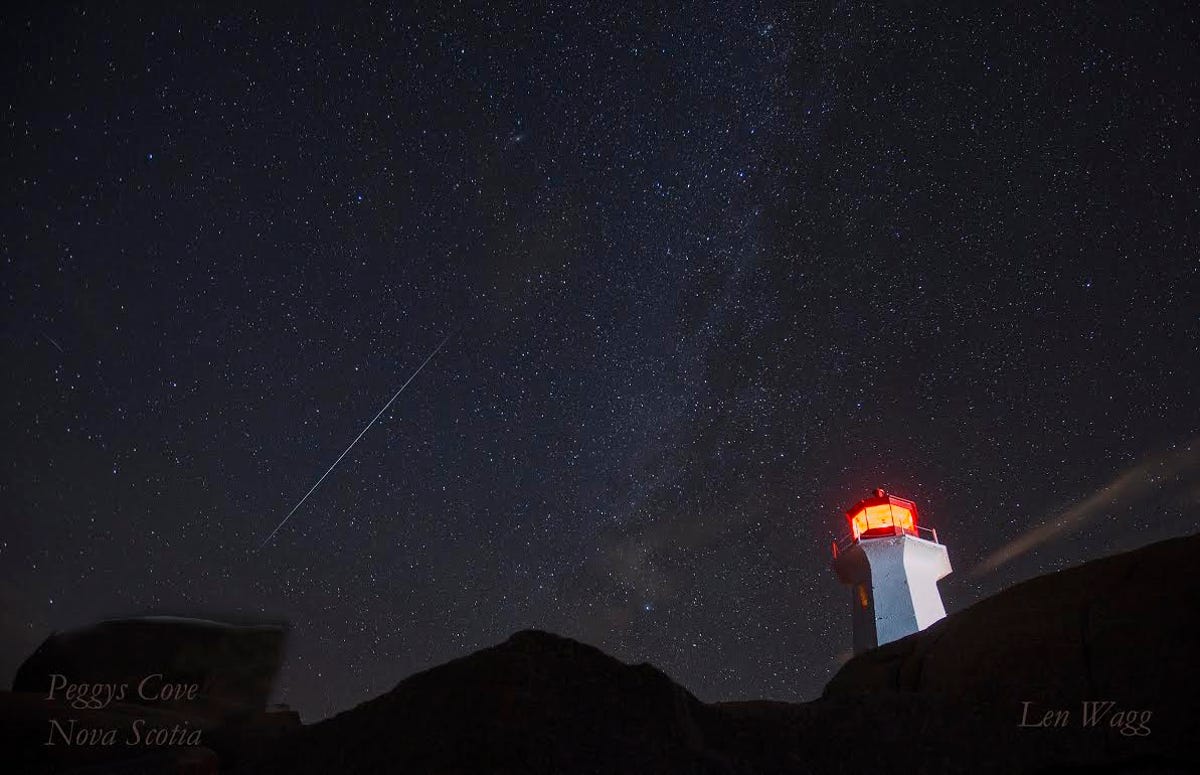Geminid glam shots: Meteor magic from around the globe (pictures)
The annual Geminid meteor shower lit up the night sky on December 13 and 14, and patient astrophotographers captured the visual fireworks.

Colorado glows with meteors
Quite a few nice meteor showers take place every year, but only one shower consistently takes the throne as the "King of Meteor Showers." The Geminid shower reached maximum spectacle on the night of Sunday, December 13, with NASA forecasting a peak activity of around 120 meteors per hour. Photographers around the world pointed their cameras to the skies for a shot at catching a "shooting star" on film.
Silt, Colorado, calls itself the "Gateway to the Outdoors." It's the location photographer Zach Becker chose as a prime viewing point for the Geminid meteor shower on the night of December 13 and the early morning of December 14.
"It was a bit of hike to get to that vantage point," Becker told CNET, and that the area is known for its prevalence of mountain lions. He set his camera to continuously take 30-second exposures and the result is this eye-catching image of meteors slicing down through the sky.

Meteor and a lighthouse
Canadian photographer Len Wagg has a knack for being in the right place. He captured a lovely streaking meteor in the skies above Peggy's Cove in Nova Scotia, Canada. "I've done a lot of night sky photography and the most challenging part is to have the camera pointed to the area where the meteor is," Wagg told CNET. The glowing lighthouse adds a human perspective to the image.
While some parts of the world contended with cloudy weather, Wagg had a good view in Nova Scotia. "Last night there were bright ones and faint ones and for the first time I saw three falling at the exact same time. It was an amazing view," he said.
Early Geminid streaks across the sky
The Geminid meteor shower peaked on the night of Sunday, December 13. Photographer Kevin Palmer faced the disappointment of a cloudy night blocking his view of the fireworks. But Palmer still has an impressive shot to share of an early Geminid meteor making its way across the sky on December 9. Palmer shot a couple hundred images in order to catch the beautiful moment a single meteor descended through the heavens that evening.
Norwegian wood, and then some
Ole Bredesen-Vestby of Kongsvinger, Norway, hiked to a lake near his house on Sunday, December 13, hoping to take photos of the Geminid meteor storm. "This was the only one I got," he sid. It's a beauty.
Capturing meteors on film is a matter of both luck and skill. Photographers often use long-exposure shots to maximize the streaking visual impact of a meteor arcing through the atmosphere. Luck comes into play as photographers hope their cameras are pointed at the right spot at the right moment.
A British view
Marc Charron snapped this moody shot in Reading, England, at about 10:19 p.m. local time on Sunday, December 13. The meteor may appear faint, but that doesn't diminish its drama. The Geminids get their royal nickname for being reliable, numerous, bright and long-lasting.
Meteors on radar
Not everyone gets to have ideal meteor-watching weather. The Geminids take place in December, which can mean cold weather, rain and snow in some parts of the world. There are some technologies that can "see" right through clouds, like radar. NASA's Meteor Watch Facebook page shared this radar image of the Geminids. "This image shows meteor activity with the shower radiants circled. Look at the intensity of the Geminids compared to the others," NASA noted.
NASA team traces meteors
NASA has a whole group dedicated to meteors called the Meteoroid Environment Office. The team shared this image from the Multiple Mirror Telescope Observatory in Tucson, Arizona. It shows the bright streak of a Geminid meteor zipping across the sky. Telescope images may not have the same sort of visual drama as photos taken with landscape features like lighthouses and lakes, but they give scientists a clear view of the meteor action.
Suburban skygazing in Japan
During two hours of skywatching from late Sunday night into early Monday morning, Akira Nishibori was able to spot 30-40 Geminids. Nishiboro describes himself as "a backyard stargazer living in a suburb of Kyoto."
Beauty and the beach
The view from a beach on the Hawaiian island of Oahu. Anthony Quintano captured this shot using a Canon EOS 5D Mark II. An encampment of tents on the sand provides a terrestrial glow as a counterpart to the meteor display in the sky.
Drama in the skies
Meteors streak across the night sky over the Galenki RT-70 radio telescope that's part of the Titov Main Space Test Centre in Russia's far east. Stars appear to swirl in a circular pattern in this long-exposure image. The dark sky dwarfs the telescope, which is one of the largest single-dish radio telescopes in the world.
Tree meet meteor
And another beauty from Russia, this one shot by Vlad Stepanov.
Even if it was cloudy where you were or your meteor photography was foiled by a lack of luck, there is still next year's shower to look forward to. It once again peaks on December 13 and 14 in 2016. There will be an almost full moon at this time next year, so it may not be prime viewing, but you may still see some impressive streaks across the heavens.



